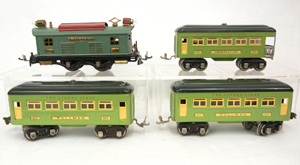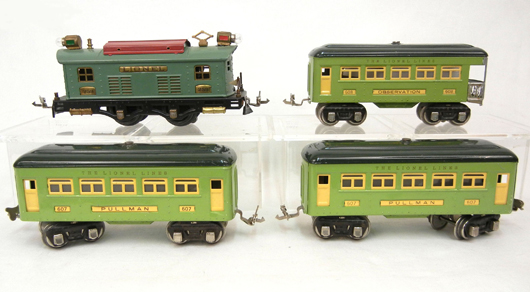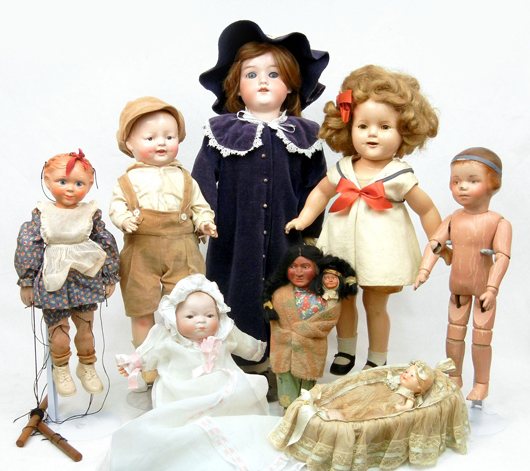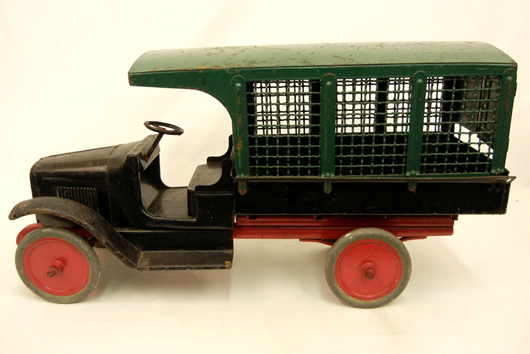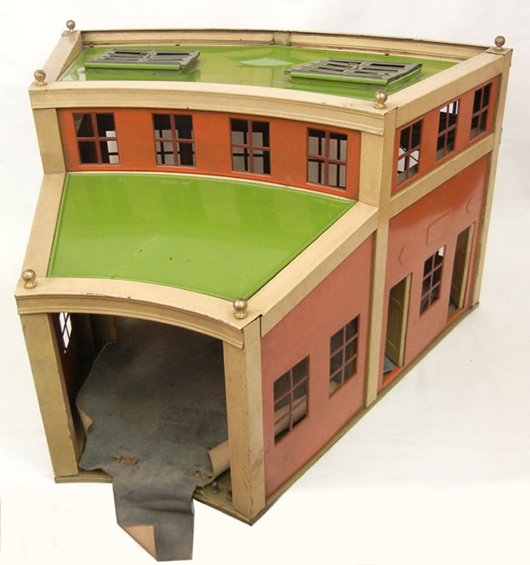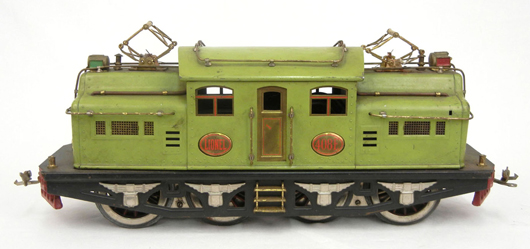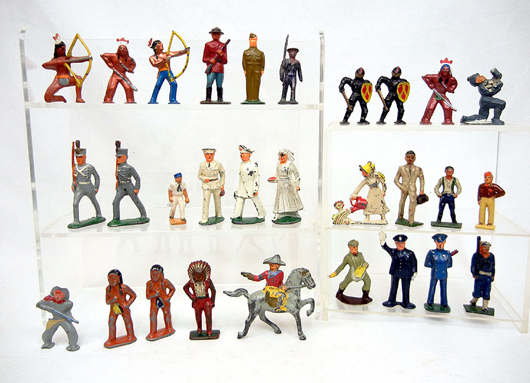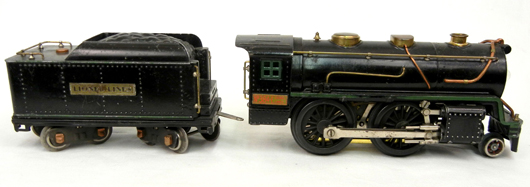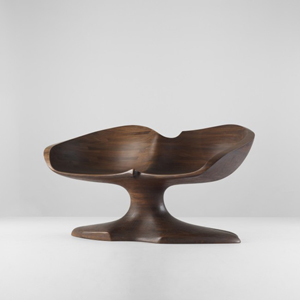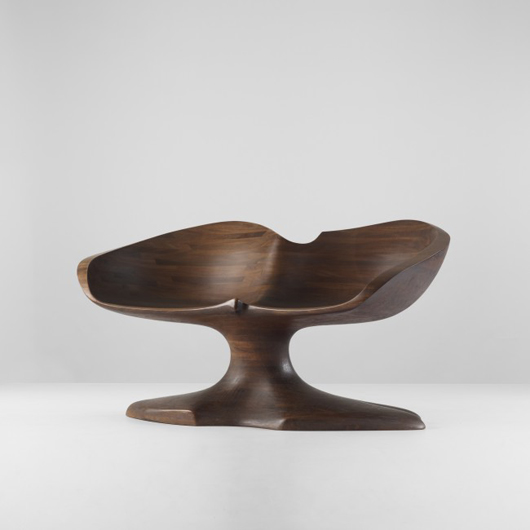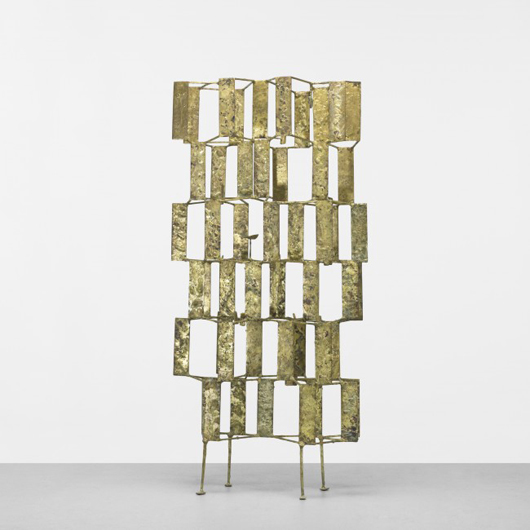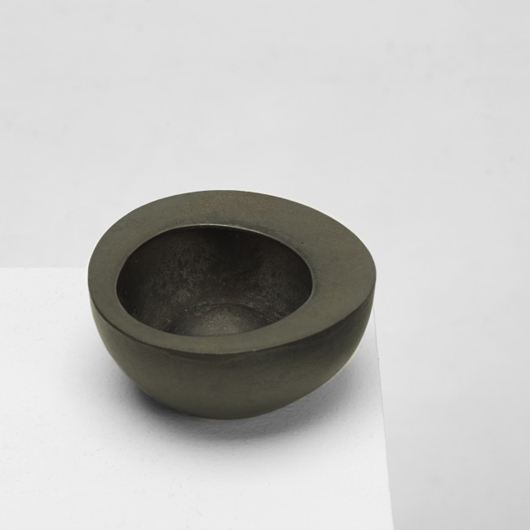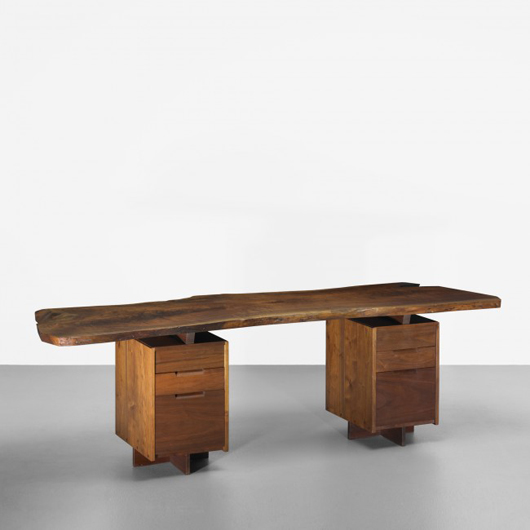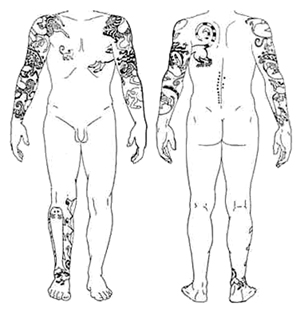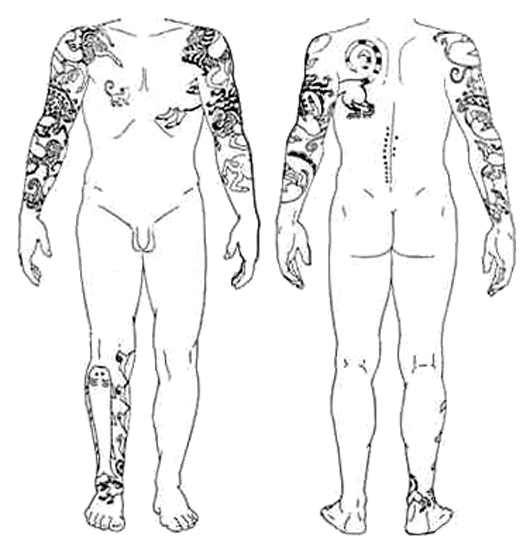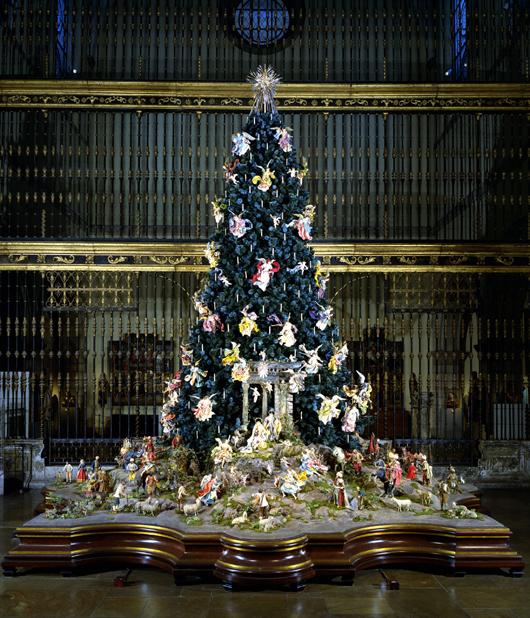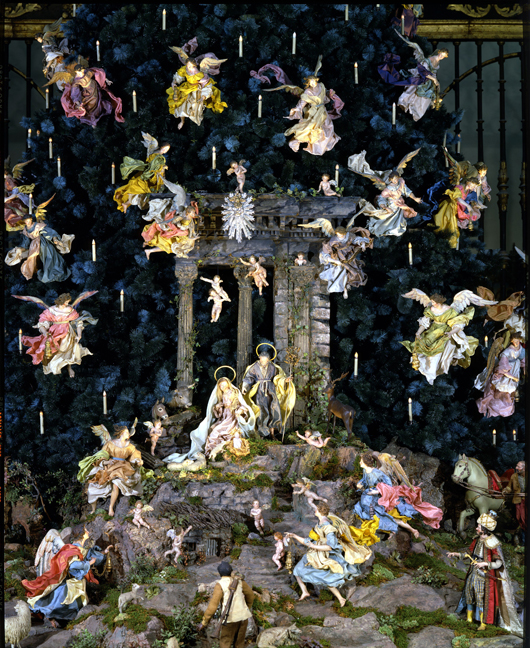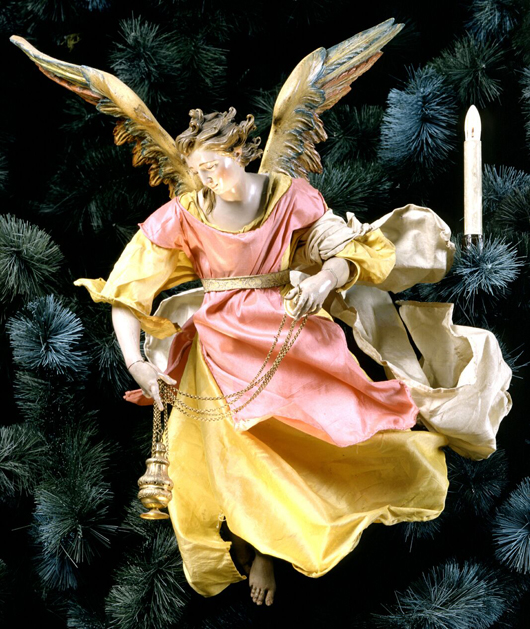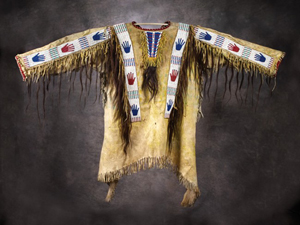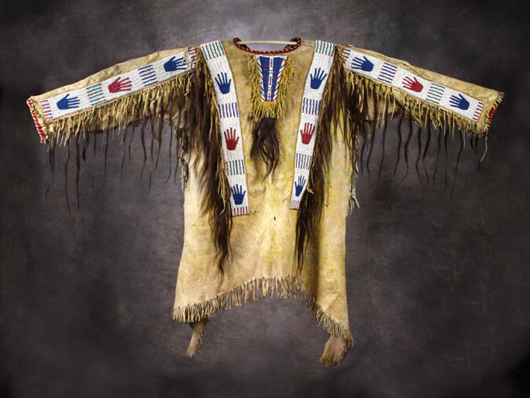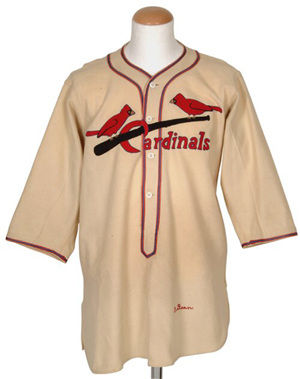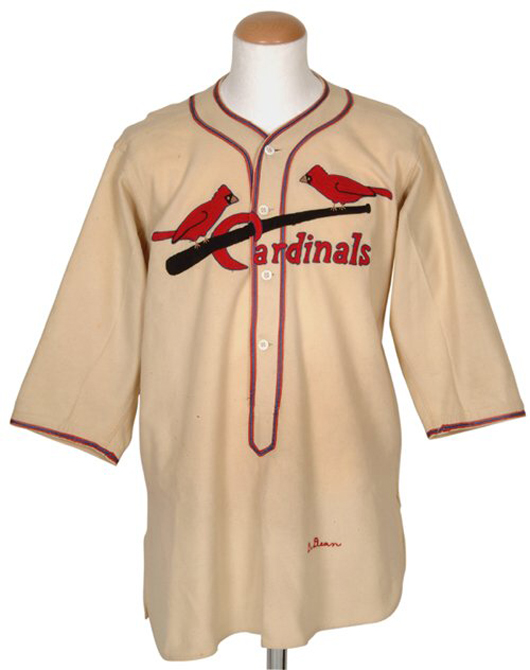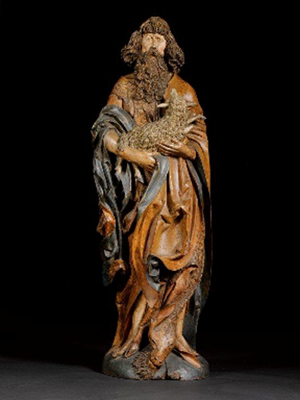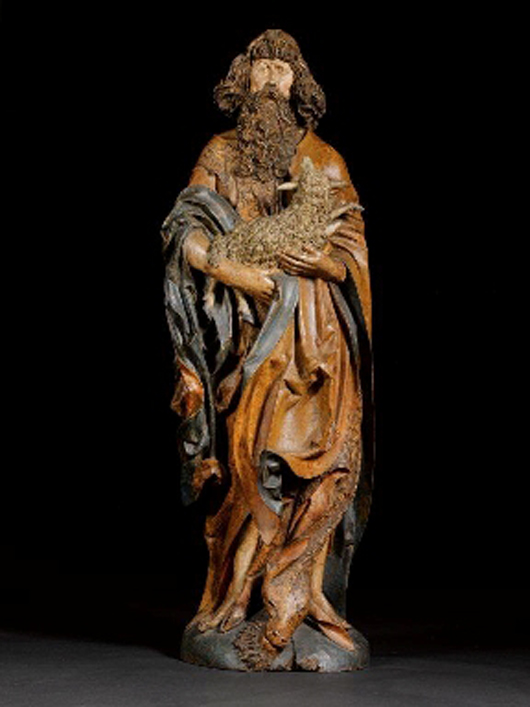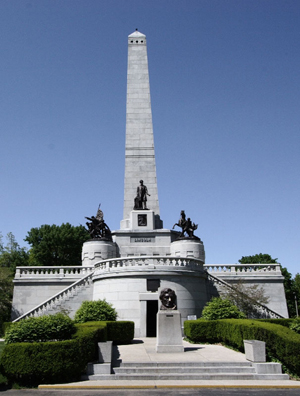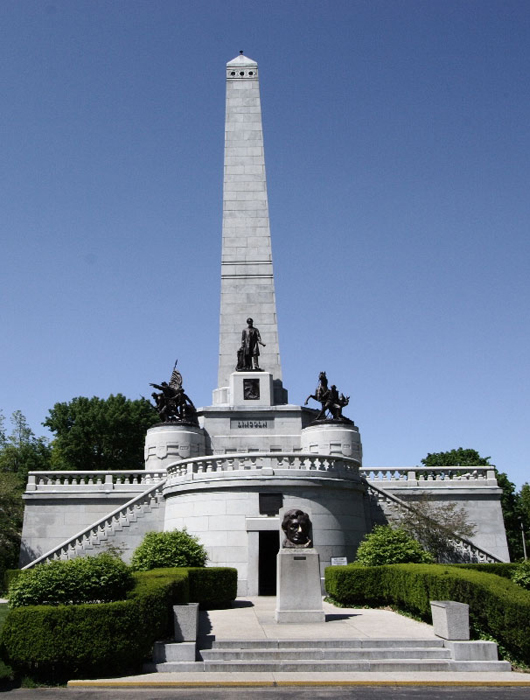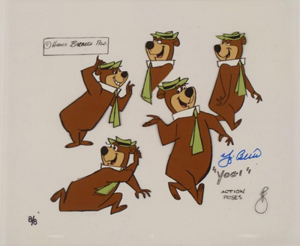
Yogi Bear limited-edition (8/8) animation production model cel, hand-painted, “signed” by Yogi, copyright Hanna-Barbera, est. $700-$1,080. Universal Live image.
NORTHBROOK, Ill. – The suburban Chicago auction house Universal Live is wall to wall with artist-signed animation cels and original production art in the run-up to its Dec. 11 sale, which will feature Internet live bidding through LiveAuctioneers.com. The 206-lot selection comes from a noted dealer who is moving into other areas of art.
Universal Live president Martin Shape remarked, “In terms of quality, it is the best assortment of original animation art we have ever offered. There’s some very collectible, early material that’s very hard to find. You just don’t find it any more. And there’s tremendous variety – every conceivable subject in animation art is included.” Among the characters represented in the sale are Yogi Bear, Woody Woodpecker, Frankenstein Jr., Daffy Duck, Mickey Mouse, Ren and Stimpy, Huckleberry Hound, the Flintstones, and additionally, nearly every superhero to leap from comic book pages in the past 50 years.
Shape said the earliest artwork in the sale is an animation production drawing of the Disney character Goofy, from the 1939 film “Goofy and Wilbur.” A black-pencil on paper depiction of Goofy out for a day of fishing with his grasshopper friend, the 10 by 12 inch drawing is conservatively estimated at $200-$310.
Disney drawings and cels cover a period of several decades, into the 1970s, and include Snow White & 7 Dwarfs (1937), Pinocchio (1940), Jungle Book (1967), Tarzan (1970), Bambi (1942) and many more.
An original sketch and finished production drawing of the scrappy cartoon sailor Popeye shows him in the hospital, being cared for by his nurse, Olive Oyl. While resting in bed, with a sign on the wall indicating it’s Halloween, Popeye receives visitors appropriate to the holiday: Casper the Ghost, who flies through the window to deliver a can of spinach as a gift, and two other supernatural friends. Signed by animator Myron Waldman, it is expected to make $1,050-$1,620.
A special category of the sale features model sheets. “These are drawings or cels that have a variety of expressions and poses used in the production of models. They’re signed by the artists,” Shape said. Among the examples to be offered are a 5-pose Yogi Bear, est. $700-$1,080; 2-pose Spider-Man, est. $590-$910; and a depiction of Scooby-Doo, Scrappy-Doo and Shaggy, from the TV series “Scooby-Doo.” It is estimated at $500-$770. The ever-popular Jetsons are in this group as well, with a 9-pose Elroy, 7-pose George and front/side view version of Rosie the Maid each requiring an affordable opening bid of $250.
More than 25 X-Men original production cels will be auctioned, and the competition to own them should be strong, since each and every one is signed by creator Stan Lee. One such example, from the TV series “X-Men,” is signed in black Sharpie by Mr. Lee and is estimated at $550-$840.
Eighteen superheroes are in family reunion photo pose in the original animation model cel from Hanna-Barbera. The characters include Superman, Wonder Woman, Batman, The Human Torch, The Thing and a bevy of other Saturday morning favorites. Artist Bob Singer’s signature appears in black Sharpie at the bottom of the cel, which is estimated at $500-$700.
Nearly all of the artworks in the sale come with certificates of authenticity. Conditions are described in the catalog as being very good to excellent.
The Dec. 11 auction will commence at 2 p.m. Central time, 3 p.m. Eastern. For information on any artwork in the sale, call 847-412-1802 or e-mail sales@universallive.com. View the fully illustrated catalog and sign up to bid absentee or live via the Internet at www.LiveAuctioneers.com.
# # #
ADDITIONAL LOTS OF NOTE
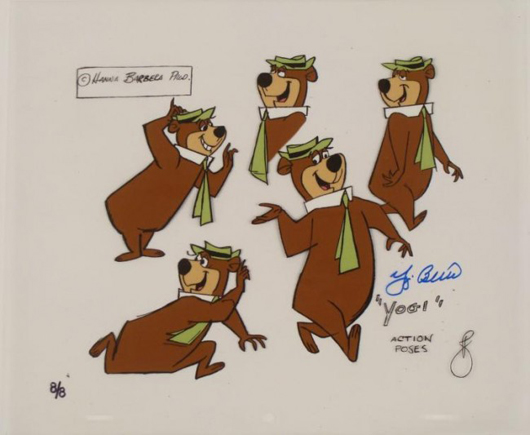
Yogi Bear limited-edition (8/8) animation production model cel, hand-painted, “signed” by Yogi, copyright Hanna-Barbera, est. $700-$1,080. Universal Live image. 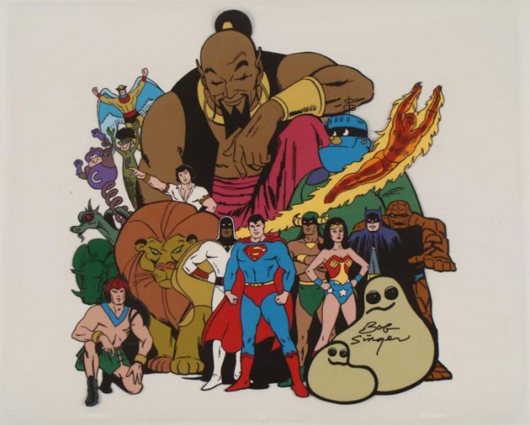
Original animation model cel featuring 18 superheroes from Hanna-Barbera cartoons, including Superman, Wonder Woman, Batman. Signed in black Sharpie by artist Bob Singer. Est. $500-$770. Universal Live image. 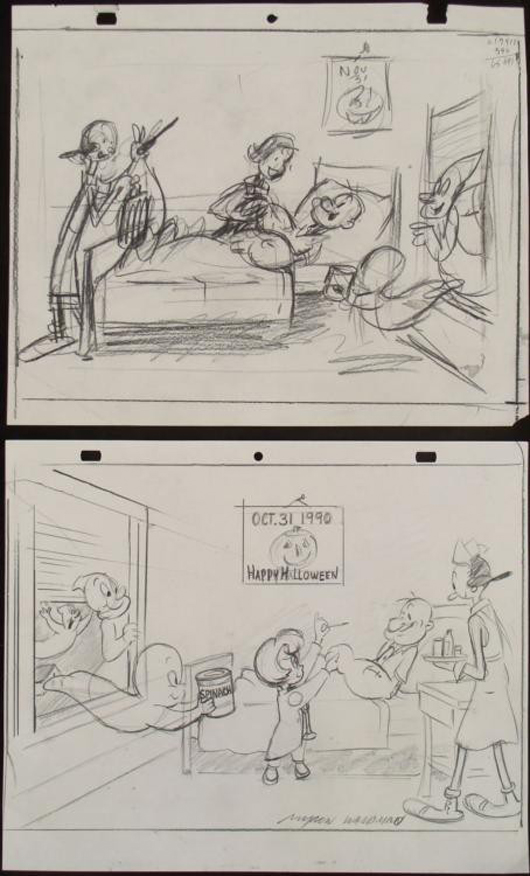
Original sketch and finished production drawing of Popeye in the hospital, with nurse Olive Oyl and visitors Casper the Ghost and other friends. Signed by animator Myron Waldman. Est. $1,050-$1,620. Universal Live image. 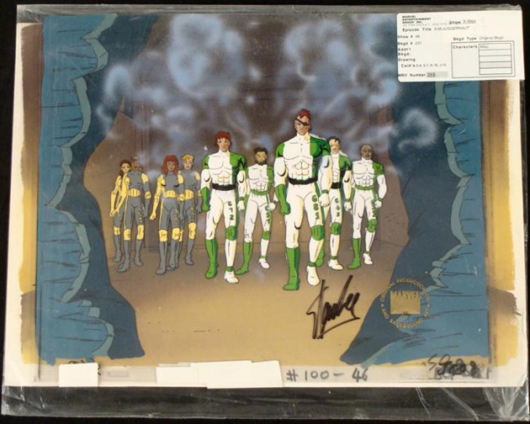
Original animation production cel and background from the TV series ‘X-Men,’ signed in black Sharpie by Stan Lee. Est. $550-$840. Universal Live image. 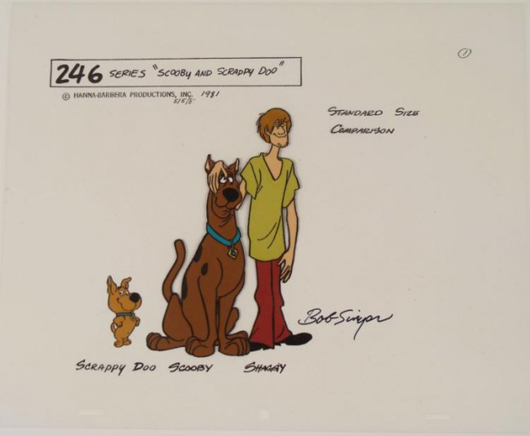
Original production animation model cel from the TV series ‘Scooby Doo,” featuring Scooby, his nephew Scrappy Doo, and their master, Shaggy. Signed in black Sharpie by artist Bob Singer. Est. $500-$770. Universal Live image. 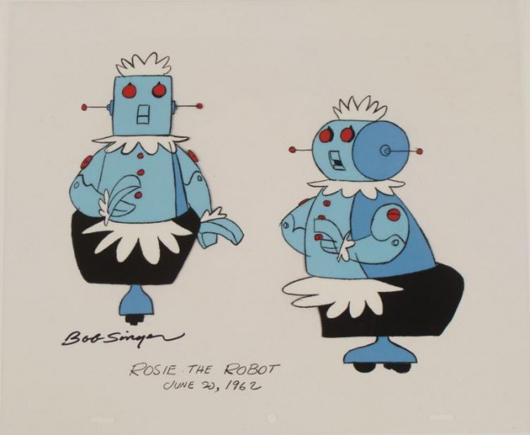
Original production animation model cel from the TV series ‘The Jetson,’ showing two views of the robot maid ‘Rosie.’ Signed in black Sharpie by artist Bob Singer. Est. $500-$770. Universal Live image. 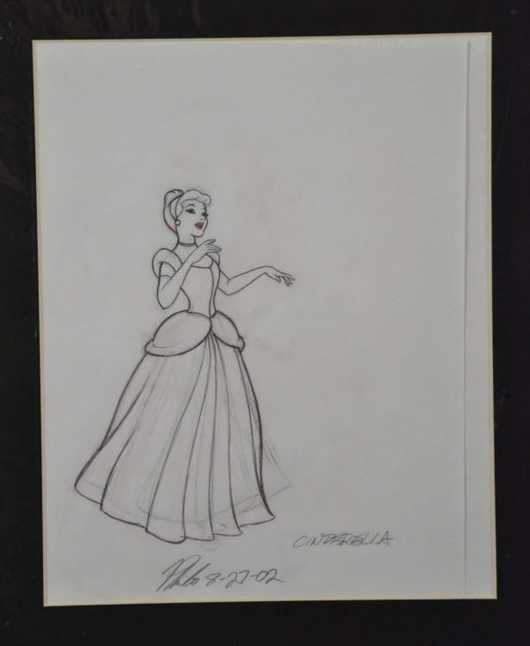
Original drawing of Cinderella used in the production of Disney merchandise, including a book. Signed and dated 8-27-02 by artist Philo Barnhart. Est. $590-$910. Universal Live image. 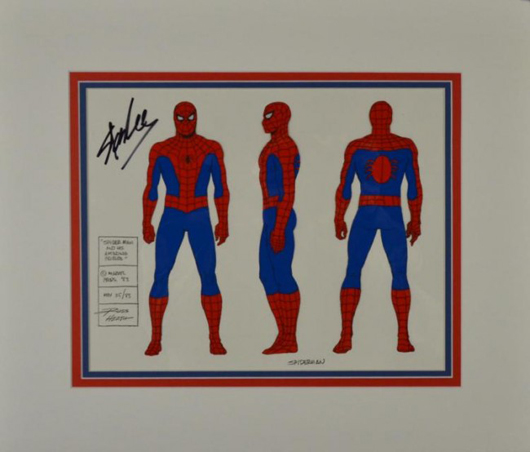
Spider-Man 3-pose original hand-painted animation model cel by artist Russ Heath. Signed in black marker by creator Stan Lee. Est. $530-$820. Universal Live image.


